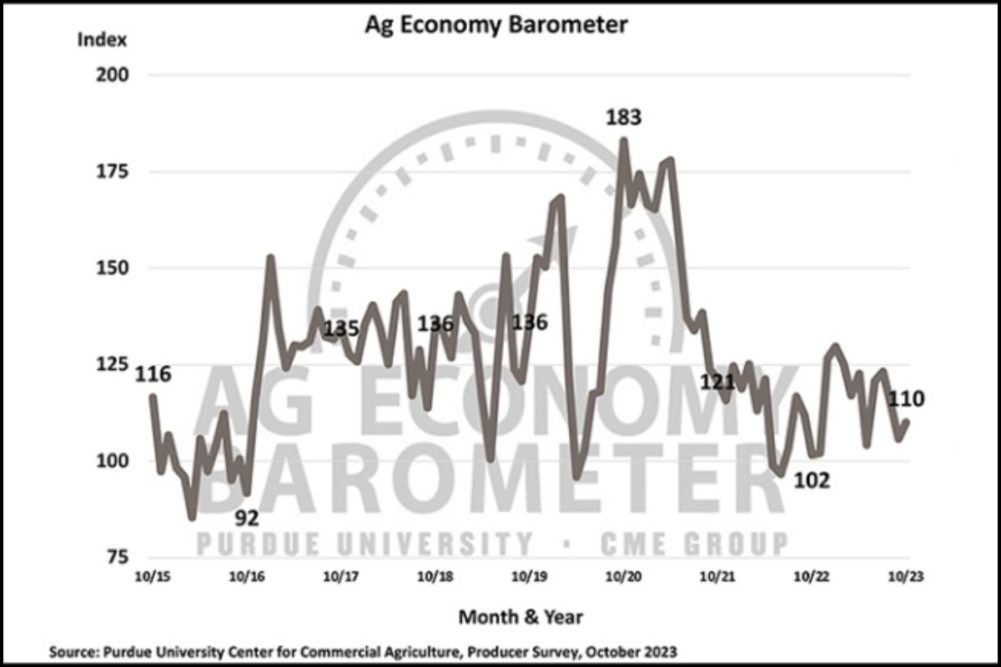WEST LAFAYETTE, INDIANA, US — US farmers are feeling better about conditions on their farms now and in the future, according to the Purdue University/CME Group Ag Economy Barometer for October.
The barometer, which provides a comprehensive measure of the health of the agricultural economy, rose 4 points to a reading of 110. The survey was conducted from Oct. 16-20.
“Farmers in this month’s survey were slightly less concerned about the risk of lower prices for crops and livestock and felt somewhat better about their farms’ financial situation than a month earlier,” said James Mintert, the barometer’s principal investigator and director of Purdue University’s Center for Commercial Agriculture.
The Index of Current Conditions rose 3 points to 101 while the Index of Future Expectations rose 5 points to 114.
Farmers’ more optimistic view of their farms’ financial situation was reflected in the Farm Financial Performance Index, which rose 6 points in October compared to September. The monthly value of 92 was the highest reading since April and was 7% higher than a year ago.
“Reports of higher-than-expected corn and soybean yields in some Corn Belt locations, along with a modest rally in corn prices, likely contributed to this month’s rise in the financial conditions and the barometer indices,” Mintert said.
However, the Farm Capital Investment Index fell 4 points in October to a reading of 35. This was the lowest reading of the year for the investment index. Nearly 8 out of 10 (78%) respondents said it was a bad time to make large investments in their farm operation, while just 13% of farmers said it was a good time to make large investments.
Among those who said it’s a bad time to invest, the most commonly cited reason was rising interest rates, chosen by 41% of respondents, up one point from September. Of those who said it is a good time to make large investments in their farm operation, 24% stated “strong cash flows,” and 20% pointed to “expansion opportunities.”
Dry weather this past spring and summer stimulated discussions among producers about shifts in long-term weather patterns.
This month’s survey asked corn and soybean producers if they have explicitly made any changes in their farming operation in response to changes in long-term weather patterns in their area.
Nearly one out of four corn/soybean farmers (24%) in the October survey indicated they implemented changes in their farm operations to better deal with shifting weather patterns. They said the biggest changes were increased use of no-till, changed mix of crops planted, planted more drought resistant varieties, installed tile drainage and installed irrigation.






